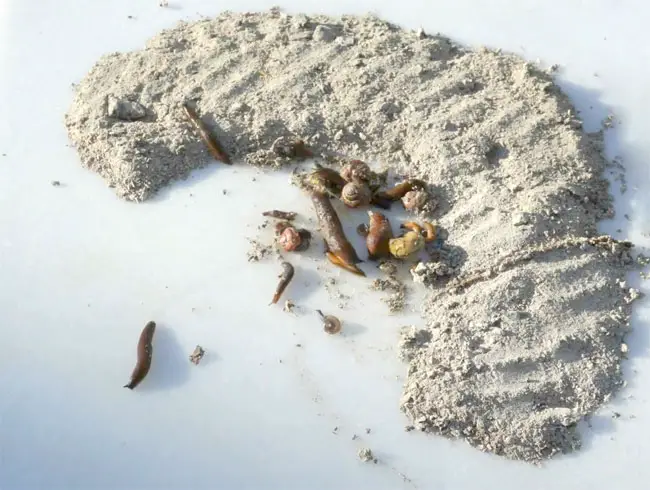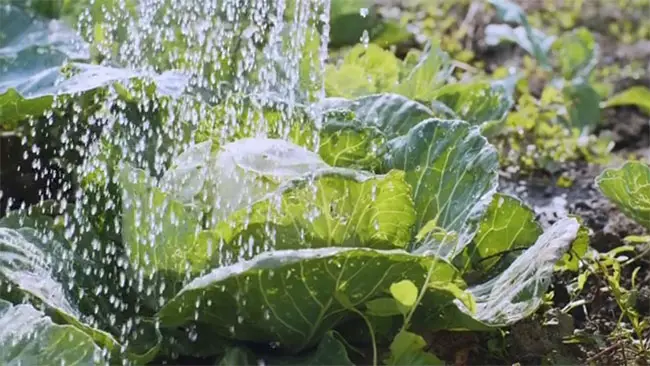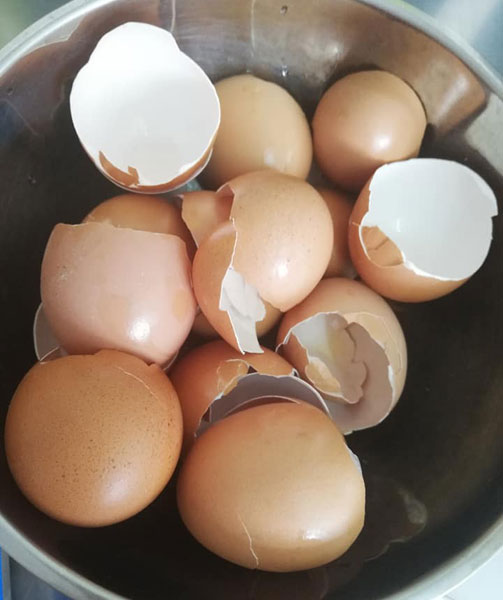Snails and slugs can cause substantial damage to organic gardens, consuming leaves and flowers. Therefore, it is important for gardeners to take proactive steps in preventing their growth.
Organic gardeners are increasingly looking for environmentally friendly solutions that mitigate snail and slug populations without relying on toxic chemical treatments or other harmful practices. A variety of methods exist which provide a safe alternative to conventional pest control products. These include physical barriers, companion planting, trap crops, hand-picking, introducing predators into the soil, as well as manipulating environmental factors such as moisture levels.
By utilizing these various strategies, organic gardeners may successfully prevent snails and slugs from destroying their precious plants while maintaining an eco-friendly approach to gardening. We shall explore each method in detail so readers have all the information they need at their disposal when deciding how best to protect their gardens from these pesky pests.
1. Water Your Plant Early in the Morning
To prevent snails and slugs, you need to water your plants early in the morning. Snails and slugs love moist and humid environments. Therefore, by watering your plants early in the day, the sun will dry your plants out. They will get much drier and can become not appealing to snails in the late evening when they are active.
Therefore, by watering your plant before sunrise you will reduce the chance of them feeding off your precious greens while providing an ideal environment for growth at the same time. Furthermore, wet soil helps to increase pressure inside the snail shells making it difficult for them to move around and feed effectively; this could be an effective way of reducing their presence in gardens naturally. With that said, however, it should also be noted that over-watering can have adverse effects too so make sure not to overwater your plants as well.
2. Beer Trap Method
Beer traps are an effective, natural way of eliminating snails and slugs. To make one, dig a hole in the ground near where these pests have been seen or noticed to be damaging plants. The hole should be approximately four inches deep and wide enough to fit a shallow container such as a plastic cup. Bury the container so that its rim is flush with the soil surface. Fill it halfway with beer then wait for the snails and slugs to come out at night and get trapped in it.
It may take some trial and error before achieving success, however, once the pests start gathering around the trap, removal can begin quickly. It’s important to remember to empty traps regularly—at least every other day—and replace old beer with fresh beer if necessary.
With this method, many gardeners find they can reduce their slug and snail populations significantly over time without resorting to chemical pesticides or baits.
3. Use Chicken Eggshells
Adopting a natural approach to controlling snails and slugs is an attractive option for many gardeners. One of the most effective methods for repelling these pests is using chicken eggshells as a barrier around plants. When crushed, the sharp edges of the shells can cause discomfort and deter gastropods from crossing over them. Here are some tips on how to use this method:
- Gather clean chicken eggshells from your kitchen or local farmers market. Rinse off any dirt or debris with water before crushing it into small pieces. Avoid leaving large fragments which may be too easily navigable by snails and slugs.
- Sprinkle the ground around your garden beds with the crushed shells, paying particular attention to areas where you have seen signs of snail activity in the past. Keep spreading until there is an even layer of shell covering all potential entry points.
- The calcium carbonate found in eggshells also has beneficial effects on soil pH levels and helps promote healthy plant growth when left undisturbed. This makes it a great addition to compost heaps as well as a deterrent against pests like snails and slugs!
Run a rake through the area after application to ensure that eggshell pieces are distributed evenly throughout your garden bed. - Reapply every two weeks or so during peak seasons of pest activity, such as springtime when temperatures begin to rise again after winter dormancy periods for snails and slugs. Make sure not to disturb existing barriers too much while replenishing supplies – it’s best if they stay intact!
By taking preventive measures early on, you can reduce populations of both types of critters without having to resort to harsh chemical solutions or other invasive techniques that might damage delicate root systems nearby. Whether used alone or combined with other methods like beer traps, using chicken eggshells should give your peace of mind knowing that you’re protecting your beloved plants from unwanted guests while keeping things all-natural at home.
4. Out at Night with a Flashlight
One effective strategy for controlling snail and slug populations is to patrol gardens with a flashlight at night. As snails and slugs are nocturnal, they will be active after sunset. A person can patrol their garden in the evening, looking for these slimy creatures. If found, the gardener should remove them immediately by hand or using tongs. It’s important that any dead animals are also collected and disposed of properly as decaying organic matter can attract more pests to the area.
Once patrolling has become part of a regular routine, attention should then turn towards removing hiding places where snails and slugs might lurk during daylight hours such as under rocks or piles of debris or mulch. In this way, eradication of these pest species can become much easier over time as fewer remain hid from view during the day.
If you hand-pick them every night for a few nights, the number of slugs and snails in your garden should reduce considerably.
5. Remove Hiding Places
Removing hiding places is an effective way to reduce snail and slug populations. To start, remove any potential areas of refuge such as piles of leaves or grass clippings, rocks, or logs from around the garden. Any debris should be removed promptly so that snails have fewer opportunities to hide during the day.
It’s important to check underboards and other pieces of wood for snails before bringing them into the garden area. After removing these materials from a garden, carefully inspect all plants for eggs deposited by slugs and snails. These eggs often appear white or yellowish in color and are typically found on plant stems or underside surfaces.
If there are signs of egg clusters on plants, use gloved hands to scrape them off manually and discard them away from the main garden area.
6. Using Bait Packets
Bait packets are a popular natural method for controlling slugs and snails in the home garden. The bait is generally made with iron phosphate, which works by causing the mollusks to stop feeding and eventually die off without damaging other beneficial organisms or contaminating food crops. When using this type of bait, it should be applied according to package directions before rain or watering. It can also be sprinkled around plants that have been affected by slug damage. For best results, it needs to be reapplied after every heavy rainfall.
In addition to following application instructions, it’s important to understand how baiting works for maximum effectiveness. Bait will only work when slugs and snails consume enough of it; therefore, more bait may be necessary if there is an especially high population of these pests in a particular area. Additionally, baits don’t always provide immediate control as they take some time to reach their full effect on the pest population. It takes several applications over multiple weeks for populations to begin decreasing significantly.
To make sure that you get the most out of your efforts, use additional methods such as handpicking slugs at night and removing hiding spots like weeds and debris from around garden areas where possible. Coordinating all available control measures together helps ensure successful long-term management of slugs and snails in the home landscape.
With careful planning and thoughtful execution, homeowners can successfully manage snail and slug infestations naturally through combination strategies such as bait packets combined with physical removal tactics.
7. Using Copper
Copper is an effective and natural way to get rid of snails and slugs in your garden. Copper strips can be installed along the perimeter of beds, planters, or around trees where these pests are likely to come into contact with them. The copper reacts with the slime on their bodies, creating a mild electric shock that prevents them from crossing. Furthermore, since it doesn’t harm beneficial wildlife like birds or lizards, you don’t have to worry about any unintended consequences when using this method.
A more permanent solution would be to install mesh fences made out of copper-based materials such as sheet metal or wire mesh that will act as a barrier between your plants and the slug population. This works well if you want to keep larger animals away from your vegetable patch too. Place pieces of scrap wood in front of the fence so that they can climb up and over without getting shocked by the copper.
The use of copper also helps reduce populations over time because its repellant properties make it difficult for snails and slugs to locate suitable food sources near their nesting sites.
8. Encourage Beneficial Wildlife Coming Over
Organic gardeners can attract beneficial wildlife to their gardens in order to control snails and slugs. This includes small birds, frogs, lizards, spiders, beetles, and other predators that feed on slimy creatures. Creating a pest-friendly environment by providing food sources such as bird seed or suet cakes will draw these animals into the garden area.
You can also incorporate natural elements like rocks for reptiles and amphibians to hide under or mulch piles for invertebrates will also encourage their presence.
By doing this, it is possible to limit the snail and slug population without pesticides or other chemicals. Furthermore, introducing certain species of plants known to repel mollusks can be just as effective in helping keep them away from your crops.
9. Wood Ash Barrier
Wood ash is a powerful natural tool for deterring snails and slugs from gardens. In fact, it can be argued that wood ash is the single greatest organic solution to this persistent problem. It is easy to use and extremely effective in keeping these slimy pests away from plants.
To make an effective wood ash barrier, simply sprinkle a generous amount of wood ash around the base of your plants. The best time to apply the ash is after rain or watering because wet soil helps the particles adhere to the ground better. Be sure to plan ahead so you don’t need to water too often since snails and slugs are most active at night when it’s humid outside. This will help keep them off your precious foliage!

The sharp edges of the wood ashes act as tiny blades, slicing through the soft bodies of any passing slugs or snails while also clogging their sensitive respiratory systems. Wood ashes are far safer than chemical options which can have potentially damaging effects on beneficial organisms like worms and ladybugs present in your garden beds. With regular applications, you can easily stop these troublesome creatures in their tracks without putting other helpful species at risk.
10. Make a Cold Coffee Spray
Making a cold coffee spray is an effective way to get rid of snails and slugs in your garden naturally. This approach is especially useful if you are looking for a solution that will not harm the environment or beneficial organisms such as bees, birds, and lizards.
To make this spray, start by brewing a pot of strong black coffee using twice the amount of grounds per cup than usual. Allow it to cool before transferring it into a clean container with a lid. Make sure there are no leaks from the top; otherwise the liquid can evaporate quickly.
You can try to add one teaspoon of dish soap which helps break down the protective slime coating on snails and slugs making them vulnerable to dehydration. Mix well until all ingredients have dissolved fully into the mixture then pour into a spray bottle. When applying the spray be sure to cover both surfaces of plants evenly but avoid oversaturating as too much can damage leaves or cause fungal growths such as powdery mildew or rust spots on foliage.
Coffee sprays should be applied every few days during periods when snail and slug activity is high to ensure maximum effectiveness. Moreover, take care not to apply near water sources since runoff could contaminate nearby aquatic ecosystems. With consistent use over time, this natural method should help reduce overall populations without harming other beneficial species in your garden habitat.
11. Using Coffee Grounds
Coffee grounds have long been used as a natural deterrent against snails and slugs. These creatures are highly sensitive to the acidic properties of coffee, which makes it an ideal repellent for gardeners looking to protect their plants from damage caused by these pests. Coffee grounds can be utilized in several ways when trying to get rid of snails and slugs naturally:
- Sprinkle freshly ground coffee around areas where snail activity is high. The sharp acidity of the caffeine will make them avoid those spots.
- Spread a generous layer of dampened coffee grounds over your soil or plant beds; this will create a protective barrier that discourages them from coming into contact with your plants.
- Utilize stale coffee grounds and scatter them around your garden beds; they will leech out moisture, making it difficult for snails and slugs to move through the area without dehydrating themselves.
In addition, using coffee grounds has other benefits such as adding nutrients to compost piles or improving drainage in soil due to its absorptive properties. It can also help deter some types of weeds. To maximize its effectiveness, combine the use of coffee grounds with other organic methods like handpicking or trapping snails or slugs away from vulnerable plants and flowers.
12. Plant Snail-Resistant Plants
Plants that are resistant to snails and slugs can make an effective barrier against them in your garden. Some species of plants naturally repel these pests, while others may have a slimy texture or sharp edges which discourage their feeding habits. Many herbs like lavender, rosemary, thyme, sage, oregano, and mint contain oils that act as natural repellents for snails and slugs. Other popular choices include wormwood, rue, and feverfew. Hardy plants such as hostas, daylilies, and ferns often have tough leaves which the mollusks find unappealing. By incorporating snail-resistant plants into your landscaping design you can create a pest-free habitat without using harsh chemicals or traps.
When choosing plants for snail resistance it is important to consider not only their taste but also whether they require extra care or maintenance when grown in shade or damp soil conditions. For example, some leafy vegetables like spinach will quickly succumb to infestations if planted in areas with high moisture content levels. Similarly, many flowering plants need regular pruning and deadheading to remain healthy during periods of drought or heavy rainstorms. Taking the time to research ideal growing conditions for each plant type should help ensure success in creating a snail-resistant landscape environment.
Organic gardening practices are key when attempting to control snail populations around your home or garden area. Making use of mulch layers helps reduce exposure to sunlight by providing necessary insulation during hot summer days while also promoting water retention and organic fertilization throughout the year.
Additionally, building raised beds with strong edging materials limits access points for crawling pests while encouraging better drainage systems than those found in traditional ground gardens. Combining various strategies such as these will help maximize protection against unwanted critters while still allowing beautiful blooms and edible produce to flourish safely all season long.
Those were the techniques for eliminating slugs and snails in your garden. You may try them out, and for sure, one of the above-mentioned methods will be able to help you with your pest issues.



